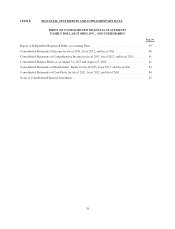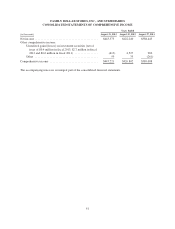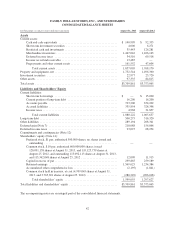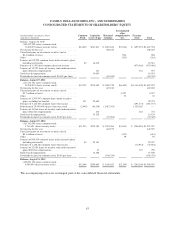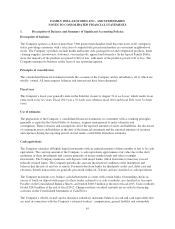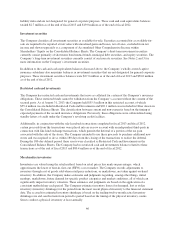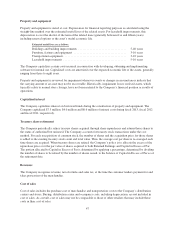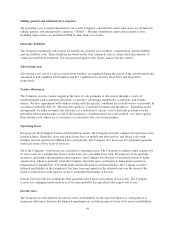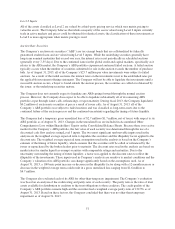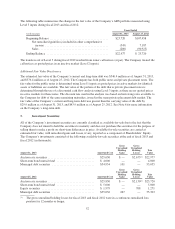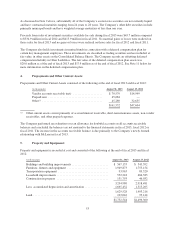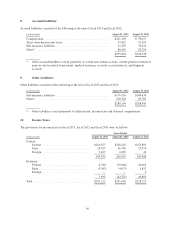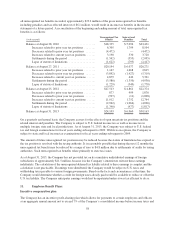Family Dollar 2013 Annual Report Download - page 52
Download and view the complete annual report
Please find page 52 of the 2013 Family Dollar annual report below. You can navigate through the pages in the report by either clicking on the pages listed below, or by using the keyword search tool below to find specific information within the annual report.Selling, general and administrative expenses
All operating costs, except transportation costs to the Company’s distribution centers and stores, are included in
selling, general, and administrative expenses (“SG&A”). Buying, distribution center and occupancy costs,
including depreciation, are included in SG&A rather than cost of sales.
Insurance liabilities
The Company is primarily self-insured for health care, property loss, workers’ compensation, general liability,
and auto liability costs. These liabilities are based on the total estimated costs of claims filed and estimates of
claims incurred but not reported, less amounts paid against such claims, and are not discounted.
Advertising costs
Advertising costs, net of co-op recoveries from vendors, are expensed during the period of the advertisement and
amounted to $18.9 million, $19.6 million and $17.1 million in fiscal 2013, fiscal 2012 and fiscal 2011,
respectively.
Vendor allowances
The Company receives vendor support in the form of cash payments or allowances through a variety of
reimbursements such as purchase discounts, cooperative advertising, markdowns, scandowns, and volume
rebates. We have agreements with vendors setting forth the specific conditions for each allowance or payment. In
accordance with ASC 605-50, “Revenue Recognition—Customer Payments and Incentives,” depending on the
arrangement, we either recognize the allowance as a reduction of current costs or defer the payment over the
period the related merchandise is sold. If the payment is a reimbursement for costs incurred, it is offset against
those related costs; otherwise, it is treated as a reduction to the cost of merchandise.
Operating leases
Except for its Store Support Center and distribution centers, the Company generally conducts its operations from
leased facilities. Generally, store real estate leases have an initial term between five and fifteen years with
multiple renewal options for additional five-year periods. The Company also has leases for equipment generally
with lease terms of five years to ten years.
All of the Company’s store leases are classified as operating leases. The Company recognizes rental expense for
its store leases on a straight-line basis over the base, non-cancelable lease term. For purposes of recognizing
incentives, premiums and minimum rental expenses, the Company uses the date of initial possession to begin
amortization, which is generally when the Company enters the space and begins to make improvements in
preparation for intended use. For tenant improvement allowances and rent holidays, the Company records a
deferred rent liability at the inception of the lease term and amortizes the deferred rent over the terms of the
leases as reductions to rent expense on the Consolidated Statements of Income.
Certain leases provide for contingent rental payments based upon a percentage of store sales. The Company
accrues for contingent rental expense as it becomes probable that specified sales targets will be met.
Income taxes
The Company records deferred income tax assets and liabilities for the expected future tax consequences of
temporary differences between the financial reporting basis and the income tax basis of its assets and liabilities.
48


